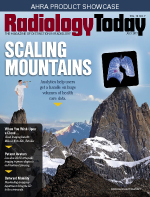 Editor's Note: Accessible Health Care
Editor's Note: Accessible Health Care
By Dave Yeager
Radiology Today
Vol. 18 No. 7 P. 3
Accessibility is one of the keys to modern health care. I'm not talking specifically about the physical ability to access care, although that is of paramount importance. Accessibility also relates to the ability to use information. In this month's cover story, Dan Harvey dives into analytics to find out how they can help radiologists and radiology departments use imaging and patient data more effectively. Radiology has been at the forefront of capturing and storing medical imaging data, but rapidly expanding image volumes combined with troves of patient data have made zeroing in on relevant information a big challenge. Analytics help users find what they need, when they need it, to streamline patient care and business processes.
Another Harvey article looks at the growth of freestanding emergency departments. Critics have concerns about accessibility in rural areas and cost, but proponents say freestanding EDs can play a role in extending care to more people. These facilities aren't available in every state, but they seem to be gaining acceptance.
Also in this issue, Beth Orenstein provides an update on low-dose orthopedic imaging. For patients who require multiple scans over time, lowering X-ray dose is a significant benefit. New techniques allow radiologists and surgeons to generate 3D models of patients with less dose—essentially improving the accessibility of the technology.
Finally, Juliann Schaeffer reports on an innovative cloud sharing program that makes the medical images of children in the Make-A-Wish Foundation program accessible to doctors at the Arnold Palmer Hospital for Children in Orlando, Florida. Although patients' families usually bring their medical histories along on these trips, medical images are often left behind. Arnold Palmer doctors are able to quickly access the images of patients who participate in the cloud-based sharing program.
Enjoy the issue.

